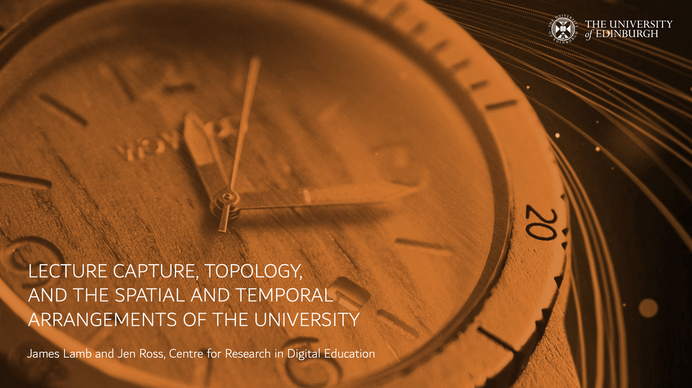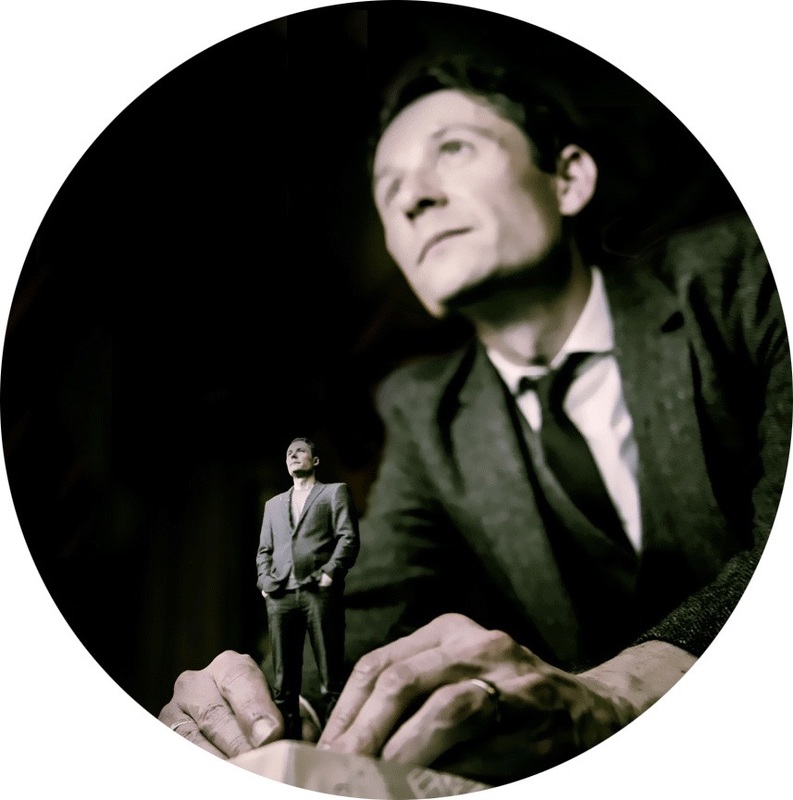|
Earlier today I contributed to an online seminar organised by Mathian Decuypere, Karmijn Van De Oudeweetering (KU Leuven) and Sigrid Hartong (Helmut-Schmidt-University Hamburg). The event brought together a range of researchers who are using theories of social topology to explore the nature of space and time within educational contexts. For my part, I talked about a piece of research I have been working on with Jen Ross where we investigated how lecture capture technologies affect the spatial and temporal arrangements of higher education (full title on the image below). Where much of the research around lecture capture has explored its impact upon attendance or assessment, we instead used it to cast a light on the relationship between technology and space, and time. To help us do this we turned to conversation talking place on the Twitter social networking platform. Across a 3-month period between mid-February and mid-May earlier this year we collected more than 550 tweets that discussed lecture capture in the context of higher education. Although conversation was dominated by academic staff and students, lecture capture was also a topic of interest among learning technologists, educational developers, ed tech providers, consultants, accessibility advisers, professional bodies, representative unions and other groups and individuals. We identified 29 different lines of conversation which conceptualised or considered lecture capture in terms of pedagogy, politics, profit, the Covid-19 Pandemic and beyond.
Jen and I hope that our work will be published later this year therefore I won't go into detail for now. What I will say, however, is that lecture capture, in relation to a range of other interests, pressures, resources and constraints, was shown to both shape, and be shaped by, the spaces and times of higher education. Lecture capture, we argue, contributed towards the formation of new educational environments: the kitchen and couch became central teaching spaces, as the lectern and lecture theatre sat in lockdown-darkness. At the same time, as staff pre-recorded content which was then made available by video, the synchronicity and timetabling that have for so long shaped the nature and rhythm of teaching and learning was disrupted. Instead, the lecture became dispersed over a greater period of time, while students also negotiated different temporalities to support their particular learning needs or preferences. More to follow later this year.
0 Comments
Leave a Reply. |
Search categories
All
I am a Lecturer in Digital Education (Education Futures), within the Centre for Research in Digital Education at The University of Edinburgh.
@james858499 [email protected] |

